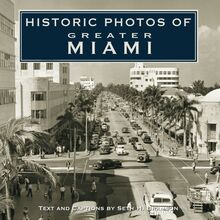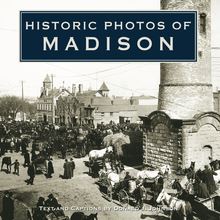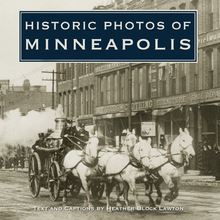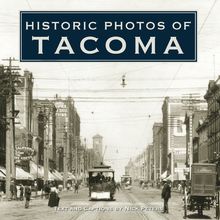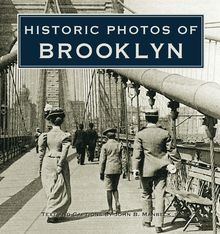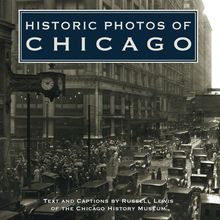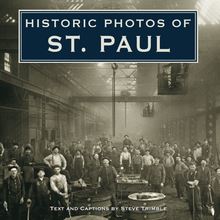Historic Photos of Birmingham , livre ebook
91
pages
English
Ebooks
2006
Vous pourrez modifier la taille du texte de cet ouvrage
Obtenez un accès à la bibliothèque pour le consulter en ligne En savoir plus
Découvre YouScribe en t'inscrivant gratuitement
Découvre YouScribe en t'inscrivant gratuitement
91
pages
English
Ebooks
2006
Vous pourrez modifier la taille du texte de cet ouvrage
Obtenez un accès à la bibliothèque pour le consulter en ligne En savoir plus
Publié par
Date de parution
01 juin 2006
Nombre de lectures
3
EAN13
9781618586049
Langue
English
Poids de l'ouvrage
6 Mo
Publié par
Date de parution
01 juin 2006
Nombre de lectures
3
EAN13
9781618586049
Langue
English
Poids de l'ouvrage
6 Mo
HISTORIC PHOTOS OF
BIRMINGHAM
One of the iconic images of Birmingham: Terminal Station with the Magic City sign out front to greet travelers as they leave the station and head downtown.
HISTORIC PHOTOS OF
BIRMINGHAM
T EXT AND C APTIONS BY J AMES L. B AGGETT
Turner Publishing Company
200 4th Avenue North Suite 950
Nashville, Tennessee 37219
(615) 255-2665
Historic Photos of Birmingham
Copyright 2006 Turner Publishing Company
All rights reserved.
This book or any part thereof may not be reproduced or transmitted in any form or by any means, electronic or mechanical, including photocopying, recording, or by any information storage and retrieval system, without permission in writing from the publisher.
Library of Congress Control Number: 2006902319
ISBN-10: 1-59652-254-2
ISBN-13: 978-1-59652-254-1
Printed in China
09 10 11 12 13 14 15-0 9 8 7 6 5 4
C ONTENTS
A CKNOWLEDGMENTS
P REFACE
A C ITY OF THE N EW S OUTH (1871-1899)
A C ITY AT THE T URN OF THE C ENTURY (1900-1917)
A G ROWING M ETROPOLIS AND A G REAT D EPRESSION (1918-1939)
D IFFICULT D AYS AND C HANGING T IMES (1940-1990)
N OTES ON THE P HOTOGRAPHS
Workers place the first steel column for the Tutwiler Hotel, 1913.
A CKNOWLEDGMENTS
This volume, Historic Photos of Birmingham , is the result of the cooperation and efforts of many individuals, organizations, institutions, and corporations. It is with great thanks that we acknowledge the valuable contribution of the following for their generous support.
Alabama Power Company
Birmingham Public Library Archives
Brice Building Company
St. Vincent s Hospital
Vulcan Materials Company
Wachovia Bank
We would also like to thank the following individuals for their valuable contributions and assistance in making this work possible:
Bill Tharpe, Alabama Power Company
Kelsey Bates, Birmingham Public Library Archives
Gigi Gowdy, Birmingham Public Library Archives
Yolanda Valentin, Birmingham Public Library Archives
Don Veasey, Birmingham Public Library Archives
Sherry Denson, Brice Building Company
John English, Vulcan Materials Company
Scott Goggins, St. Vincent s Hospital
John Lotz, Wachovia Bank
Carolyn Wallace, Wachovia Bank
P REFACE
Birmingham has thousands of historic photographs that reside in archives, both locally and nationally. This book began with the observation that, while those photographs are of great interest to many, not all are easily accessible. During a time when Birmingham is looking ahead and evaluating its future course, many people are asking, How do we treat the past? These decisions affect every aspect of the city-architecture, public spaces, commerce, tourism, recreation, and infrastructure-and these, in turn, affect the way that people live their lives. This book seeks to provide easy access to a valuable, objective look into Birmingham s history.
The power of photographic images is that they are less subjective in their treatment of history. While the photographer can make decisions regarding what subject matter to capture and some limited variation in its presentation, photographs do not provide the breadth of interpretation that text does. For this reason, they provide an original, untainted perspective that allows the viewer to interpret and observe.
This project represents countless hours of research and review. The researchers and author have reviewed thousands of photographs in numerous archives. We greatly appreciate the generous assistance of the archivists listed in the acknowledgments of this work, without whom this project could not have been completed.
The goal in publishing this work is to provide broader access to a set of extraordinary photographs that seek to inspire, provide perspective, and evoke insight that might assist people who are responsible for determining Birmingham s future. In addition, the book seeks to preserve the past with adequate respect and reverence.
The photographs selected have been reproduced using multiple colors of ink to provide depth to the images. With the exception of touching up imperfections caused by the damage of time, no other changes have been made. The focus and clarity of many images is limited to the technology and the ability of the photographer at the time they were taken.
The work is divided into eras. Beginning with some of the earliest known photographs of Birmingham, the first section records photographs from the 1870s through the end of the nineteenth century. The second section spans the beginning of the twentieth century to World War I. Section three moves from World War I to World War II. And finally, Section four covers the World War II era to the 1980s.
In each of these sections we have made an effort to capture various aspects of life through our selection of photographs. People, commerce, transportation, infrastructure, religious institutions, educational institutions, and scenes of natural beauty have been included to provide a broad perspective.
It is the publisher s hope that in utilizing this work, longtime residents will learn something new and that new residents will gain a perspective on where Birmingham has been, so that each can contribute to its future.
- Todd Bottorff, Publisher
First Avenue North in the 1890s. The tallest building in the distance is the Caldwell Hotel, built in 1886. Promoted as Birmingham s first fireproof hotel, the Caldwell burned down in 1894.
A C ITY OF THE N EW S OUTH
(1871-1899)
On an early spring day in 1872, a team of engineers took their surveying equipment out into a Jones Valley cornfield and began laying off the streets and blocks of Birmingham. Hired by the Elyton Land Company, the firm that founded Birmingham, the surveyors could work with an almost blank slate on the valley floor. With carefully recorded field notes and stakes driven into the ground, they created a city.
The Birmingham area held great industrial promise. All the ingredients needed to produce iron and steel were available in abundance and close proximity, but Birmingham s iron and steel industry developed in fits and starts. Sloss Furnaces began operation in 1882 and Henderson Steel produced Alabama s first steel in 1888, but for almost three decades, Birmingham failed to develop into the El Dorado of iron-masters that the city s founders had envisioned. Industrial development took a great leap in 1899 when the Tennessee Coal, Iron and Railroad Company began casting steel at its new Ensley works.
Just two years after Birmingham s founding, James R. Powell, president of the Elyton Land Company, told his stockholders that this magic little city of ours has no peer in the rapidity of its growth, combined with the character of its population and buildings.
Birmingham did experience remarkable growth in its early decades. The population in 1880, the year of the city s first census, was slightly more than 3,000 people. By the end of the nineteenth century, the city had grown to more than 38,000 people, with more living in surrounding suburbs.
Birmingham did not enter the twentieth century with all of its rough edges smoothed away. But by 1899, Birmingham had developed from a ragged town peopled by land speculators into a community with a modest number of theaters, accomplished musicians, social clubs, and lake resorts.
Taken in 1873, this is the earliest known photograph of Birmingham. The two chimneys in the bottom left corner are probably on the roof of the county jail. The street behind the two houses in the foreground is Fifth Avenue North, about where the Redmont Hotel now stands.
The first Jefferson County courthouse to be located in Birmingham, as it appeared in 1874. In a recent election that included many questionable campaign activities, voters had approved moving the courthouse from the nearby village of Elyton to the new city of Birmingham.
A mule-drawn streetcar on First Avenue North, 1887.
A Georgia-Pacific Railroad engine outside the old Sloss Furnaces, 1881.
A passenger train idles near Birmingham in the 1880s.
Lakeview resort, seen here from Highland Avenue in 1893. Located on the site that is now the Highland Park Golf Course, Lakeview boasted a hotel, dance pavilion, and boat rides. Streetcars brought residents from Birmingham for the day or weekend.
Roden s Book Store on Second Avenue North near Nineteenth Street, 1884. At far-left is John B. Roden, proprietor.
The home of Robert Jemison, Sr., on the corner of Sixth Avenue North and Twenty-first Street, around 1888. Jemison later moved to Glen Iris Park, an area he developed for his family and friends.
This 1890 skyline view of Birmingham shows the Jefferson County Courthouse (building with tower) on the corner of Twenty-first Street and Third Avenue North.
Nineteenth Street North at Second Avenue, around 1890. The fountain in the middle of the intersection was later removed and placed in storage, then lost.
The corner of Third Avenue North and Twenty-second Street, around 1890. The construction on the corner is the laying of the foundation for St. Paul s Catholic Church. The small wood-frame church on the far left is the old St. Paul s.
Streetcar lines allowed people to live farther from work and shopping and encouraged the development of Birmingham s first suburbs.





